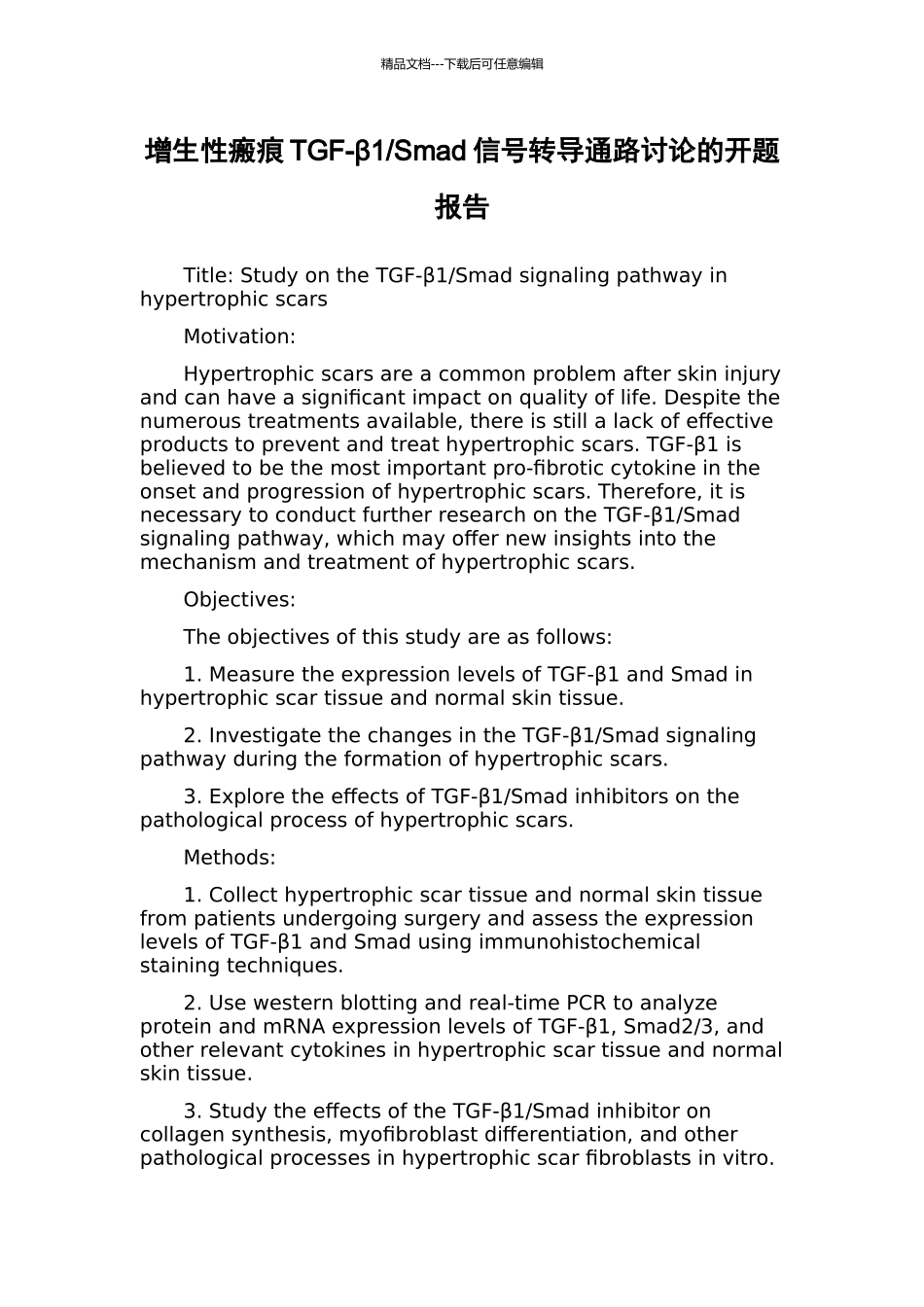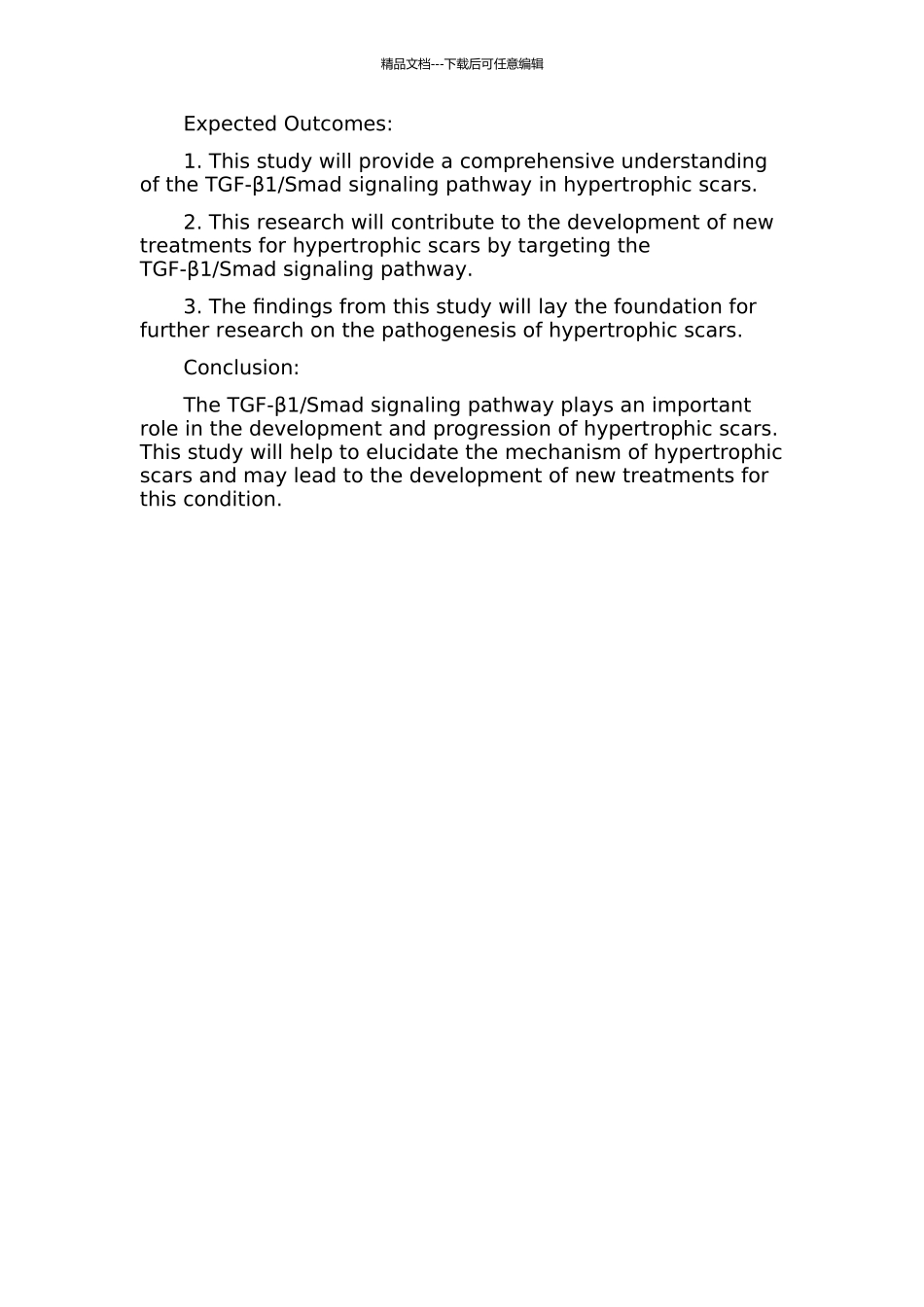精品文档---下载后可任意编辑增生性瘢痕 TGF-β1/Smad 信号转导通路讨论的开题报告Title: Study on the TGF-β1/Smad signaling pathway in hypertrophic scarsMotivation:Hypertrophic scars are a common problem after skin injury and can have a significant impact on quality of life. Despite the numerous treatments available, there is still a lack of effective products to prevent and treat hypertrophic scars. TGF-β1 is believed to be the most important pro-fibrotic cytokine in the onset and progression of hypertrophic scars. Therefore, it is necessary to conduct further research on the TGF-β1/Smad signaling pathway, which may offer new insights into the mechanism and treatment of hypertrophic scars.Objectives:The objectives of this study are as follows:1. Measure the expression levels of TGF-β1 and Smad in hypertrophic scar tissue and normal skin tissue.2. Investigate the changes in the TGF-β1/Smad signaling pathway during the formation of hypertrophic scars.3. Explore the effects of TGF-β1/Smad inhibitors on the pathological process of hypertrophic scars.Methods:1. Collect hypertrophic scar tissue and normal skin tissue from patients undergoing surgery and assess the expression levels of TGF-β1 and Smad using immunohistochemical staining techniques.2. Use western blotting and real-time PCR to analyze protein and mRNA expression levels of TGF-β1, Smad2/3, and other relevant cytokines in hypertrophic scar tissue and normal skin tissue.3. Study the effects of the TGF-β1/Smad inhibitor on collagen synthesis, myofibroblast differentiation, and other pathological processes in hypertrophic scar fibroblasts in vitro.精品文档---下载后可任意编辑Expected Outcomes:1. This study will provide a comprehensive understanding of the TGF-β1/Smad signaling pathway in hypertrophic scars.2. This research will contribute to the development of new treatments for hypertrophic scars by targeting the TGF-β1/Smad signaling pathway.3. The findings from this study will lay the foundation for further research on the pathogenesis of hypertrophic scars.Conclusion:The TGF-β1/Smad signaling pathway plays an important role in the development and progression of hypertrophic scars. This study will help to elucidate the mechanism of hypertrophic scars and may lead to the development of new treatments for this condition.

